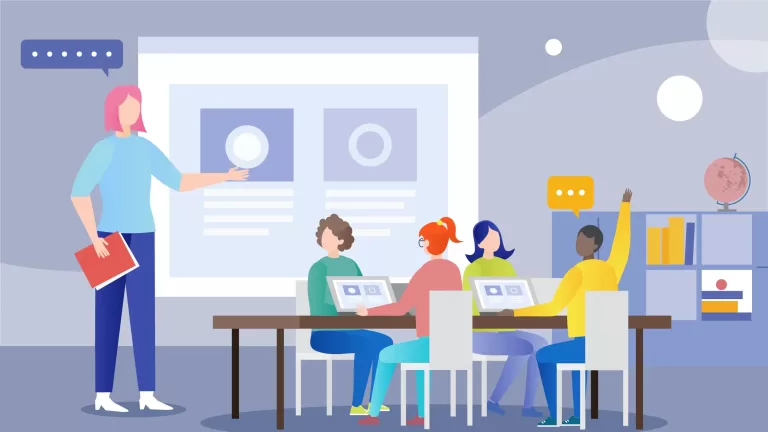Video games can be challenging
If you love playing video games, you might be surprised to know that they can also help you learn new skills and improve your brain power. Video games are not just a fun way to pass the time, but also a powerful tool for learning and development. Here are some of the benefits of playing video games for learning:
- Video games can enhance your memory and attention. Many video games require you to remember complex information, such as maps, objectives, strategies, and characters. This can boost your memory and attention span, as well as your ability to process and recall information. Video games can also train your focus and concentration, as you need to pay attention to multiple stimuli and react quickly to changing situations.
- Video games can improve your problem-solving and critical thinking skills. Many video games challenge you to solve puzzles, overcome obstacles, and make decisions that affect the outcome of the game. This can improve your logical thinking, creativity, and analytical skills. Video games can also teach you how to learn from your mistakes and adapt to different scenarios.
- Video games can broaden your knowledge and perspective. Many video games expose you to different cultures, histories, languages, and topics that you might not encounter in your everyday life. This can enrich your knowledge and spark your curiosity about the world. Video games can also help you develop empathy and understanding for different people and situations.
- Video games can motivate you to learn more. Many video games reward you for your progress and achievements, such as unlocking new levels, items, or abilities. This can motivate you to keep playing and learning more. Video games can also make learning more fun and engaging, as you can choose the games that interest you and suit your learning style.
As you can see, video games can help you learn in many ways. They can stimulate your brain, enhance your skills, expand your horizons, and inspire you to learn more. So next time you play a video game, remember that you are not only having fun, but also learning something valuable.
Examples of Educational Video Games
There are many examples of educational video games for different subjects and age groups. Some of the popular ones are:
- Carmen Sandiego: A series of games that teach geography, history, language, and math by following the clues of a master thief around the world and through time.
- Big Brain Academy: A series of games that test your brain power in various categories such as memory, logic, analysis, and identification.
- The Oregon Trail: A game that simulates the journey of American pioneers in the 19th century, teaching history, geography, and survival skills.
- Math Blaster!: A game that teaches math concepts and skills through fun and challenging activities and missions.
- GCompris: A game that offers over 100 activities for children aged 2 to 10, covering topics such as reading, writing, science, art, music, and more.
These are just some examples of educational video games. There are many more out there for you to explore and enjoy.
How to choose Educational Video Games
There are some tips and criteria that can help you make sure that the video games are educational and suitable for your learning goals. Here are some of them:
- Define your teaching goals: What specific concepts or skills do you want to learn or reinforce? First identify the learning outcomes you want to achieve through the use of an educational game.
- Research and evaluate games: Now that you know what you want to learn, research games that match up with your goals. You can use online reviews, ratings, and recommendations from reputable sources to find games that are appropriate for your age, maturity, and skill level. You can also look for games that have been tested and proven to be effective in educational settings.
- Choose games that put learning first: A good game should not rely on superficial elements like points, badges, or leaderboards to motivate you to play. Instead, it should focus on deeper concepts, exploration, and experimentation that sparks curiosity and interest. A good game should also give you feedback, choice, and challenge that help you form your own understanding of the game’s systems and how they relate to real-world contexts.
- Balance your screen time: Even if a video game or app is educational, fun, and the right age level for you, you still want to consider your screen time. Too much screen time can have negative effects on your health, sleep, and social skills. You should also balance your gaming time with other activities and take breaks to avoid eye strain or fatigue.
- Make connections and reflect: Playing an educational game is not enough to ensure learning. You also need to make connections between your play and the world around you. You can do this by talking to others about what you learned, asking questions, applying your knowledge to other situations, or creating something based on your game experience. You can also reflect on your own learning process and how the game helped or challenged you.
These are some of the steps that can help you choose and use educational video games effectively.
How to create your own Educational Game
Creating your own educational game can be a fun and rewarding way to express your creativity and share your knowledge with others. There are different tools and methods that you can use to create educational games, depending on your goals, skills, and resources. Here are some general steps and tips that can help you create your own educational game:
- Define your learning objectives: What do you want your players to learn from your game? What skills or concepts do you want to teach or reinforce? How will you measure their learning outcomes? Having clear and specific learning objectives will help you design your game around them and align them with your game mechanics and feedback.
- Choose your game format: What kind of game do you want to create? Do you want to make a quiz, a puzzle, a simulation, a story, or something else? What platform do you want to use? Do you want to make a digital game or a physical game? Do you want to use an existing tool or framework, or create your own from scratch? Choosing your game format will help you determine the scope and feasibility of your project and the tools and skills you need.
- Design your game elements: What are the main components of your game? How will they interact with each other and with the players? How will they support your learning objectives? Some of the common game elements are: theme, story, characters, rules, goals, challenges, rewards, feedback, graphics, sounds, etc. Designing your game elements will help you create a coherent and engaging game experience for your players.
- Test and refine your game: How well does your game work? Does it achieve your learning objectives? Is it fun and easy to play? Does it have any bugs or errors? Testing and refining your game is an essential step to ensure its quality and effectiveness. You can test your game yourself, or ask others to play it and give you feedback. You can also use data and analytics to measure the impact of your game on your players’ learning and behavior.
- Share and promote your game: How will you distribute and market your game? Who is your target audience? How will you reach them and convince them to play your game? Sharing and promoting your game is an important step to increase its visibility and impact. You can use various channels and strategies to share and promote your game, such as social media, blogs, websites, newsletters, events, etc.
These are some of the steps and tips that can help you create your own educational game.








How video games can assist learning